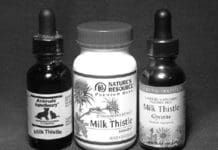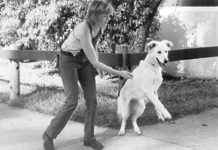Home Search
allergies/feed/rss2/Rawhide%20chews%20are%20potentially%20dangerous%20because%20they%20can%20be%20a%20choking%20hazard%20or%20cause%20gastrointestinal%20obstructions%20if%20your%20dog%20manages%20to%20chew%20off%20a%20piece%20that%20is%20small%20enough%20to%20swallow,%20but%20too%20large%20to%20pass%20unimpeded.%20In%20addition,%20some%20rawhide%20chews%20are%20hard%20enough%20to%20break%20or%20damage%20teeth. - search results
If you're not happy with the results, please do another search
Living with a Difficult Dog
By your own standards, your dog’s life may not seem all that stressful – after all, he doesn’t have bills to pay, does he? But when you apply the more scientific definition of the word – anything that alarms or excites him, triggering his sympathetic nervous system into action and flooding him with the “fight or flight” chemicals adrenaline and noradrenaline – you may be able to see how many seemingly unrelated things in his environment actually contribute to his “misbehavior.”
Cats and Dogs
I am in love with a fantastic man and his eight-month-old Dalmatian, Lexi. My dog Bailey and Lexi are becoming fast friends, despite their...
Using Baby Gates as Puppy Management Tools
There are lots of other wonderful applications for baby gates in addition to basic puppy management. We have long used one to bar the dogs from our cats’ room (the cats jump over the gate); this keeps the canines from dining on kitty kibble, and prevents them from devouring that grossly delectable dog treat, litter box “kitty rocca.” Gates can also be used to keep a dog out of a baby’s nursery, or out of the bedroom of any family member who is allergic to dog hair. And if your clever Collie has learned that the sofa is off limits when you are there but fair game when you’re away, you can use a gate to block her access to the room with the forbidden furniture.
Milk Thistle for Dogs
Milk thistle is an amazing herb, used to treat diabetes and IBD but its benefits to the liver are responsible for its inclusion in numerous medical research trials. Silymarin, which is itself a combination of several other active compounds, has been extensively studied around the world, and has been shown to be safe and effective in treating a variety of liver diseases and other conditions. It specifically protects the liver against toxins (including some drugs and heavy metals), activates protein synthesis, and stimulates growth of new liver cells to replace those that are dead or damaged. Milk thistle also has strong antioxidant (destroys oxygen free radicals) and anti-inflammatory actions.
Understanding Congestive Heart Failure in Dogs
Dogs don't experience heart attacks the way humans do, but this doesn't mean they don't die of heart disease. Heart failure is increasingly common in America's dogs, with many showing symptoms by age seven or eight. Even some young dogs develop congestive heart failure, inheriting the propensity for the disease from their parents. Conventional medical practitioners consider congestive heart failure and other circulatory problems to be progressive and irreversible, but holistic veterinarians know that in many cases, heart disease can be slowed, reversed, and even cured. Understanding heart disease will help you prevent it in healthy dogs and treat it in dogs who are already ill.
Drinking the Purest Water Possible is Important to Your Dogs Health
Water plays a critical and complex role in the health of all mammals, constituting 55 to 75 percent of the body mass of warm-blooded creatures. A fetus develops in its mother’s amniotic sac and, from birth till death, water bathes and fills every one of a mammal’s billions of cells. In essence, the bodies of people, dogs, and other mammals are water-cooled engines. Releasing water vapor by panting and sweating through its paw pads induces gentle cooling in a dog’s body. Water also lubricates a dog’s joints and muscles, cushions the spaces between each individual cell, and fills up all of the minute hollows in a dog’s body. The principal element of blood, water transports oxygen to all canine body tissues, and helps the white blood cells produced by a dog’s immune system move about its body and fight infections.
Training Your Dog to Behave Around Guests
Whether you have a pup with normal puppy energy or an obstreperous teenager who has good manners lessons to catch up on, clicker training can be a magically effective and gentle way to convince a dog to calm down. No yelling, no physical punishment; just clicks and treats for any pause in the action. That said, the biggest challenge with a hyper" dog is that any praise or reward may cause her to begin bouncing off the walls again. It is nearly impossible to deliver a treat to an excitable dog while she is still in the act of being calm. By the time you get the treat to her mouth she is once again doing her Tasmanian devil act."
Teaching Your Dog “Off”
When they fill out their evaluation forms at the end of a six-week course, my clients frequently name the Off" exercise as one of the most useful behaviors they have taught their dogs in class. "Off" means "Whatever you are paying attention to right now
Training and Socializing Dog-Aggressive Dogs
Going for a walk with your dog may be one of your favorite ways to exercise and relax, but your pleasant outing can quickly turn into a stressful one if you happen to encounter another dog running loose. If the other dog is threatening or your own dog reacts aggressively, the situation can become downright dangerous. Like most owners of dog-aggressive dogs, Thea McCue of Austin, Texas, is well aware of how quickly an outdoor activity with her dog can stop being fun. Wurley, her 14-month-old Lab mix, is a happy, energetic dog who loves to swim and go running on the hike-bike trails around their home. But when he's on leash and spots another dog, he sometimes barks, growls, and lunges. Since he is 22 inches tall and weighs 60 pounds, he can be hard to handle, says McCue. When he pounced on one little 10-pound puppy
Working With Obsessive/Compulsive Dogs
The dainty, 18-month-old Cavalier King Charles Spaniel appeared perfectly normal and happy when she and her owner greeted me at the door, but I knew better. Her owner had already advised me over the phone that Mindy was a compulsive “fly-snapper,” and that the stereotypic behavior had intensified in recent weeks, to the point where it was making life miserable for both Mindy and her owner. Indeed, it was only a matter of minutes before I saw Mindy’s expression change to one of worry, then distress and anxiety, as her eyes began to dart back and forth. Her efforts grew more frantic and her demeanor more anxious, and included stereotypic tail-chasing, until she finally ran from the living room into the safety of her crate in the darkened pantry.
Protecting Your Dog from Tick Bites and Lyme Disease
Given the potential duration and magnitude of a Lyme disease infection in your dog, we think it's pretty important to do something to protect your dog from ticks, especially in areas where cases of Lyme are common. This is one of the instances where you have to weigh all the factors against each other in this case, your dog's health and vulnerability, the risk of his exposure to ticks, the prevalence of Lyme in your area, and the tick-repelling and tick-killing products available to you to decide what you are going to do to protect your dog. It's not an easy equation; it's more of a complicated algorithm. Let's look at each of these areas and how they interact.
Best Dog Training Approaches
All dog training techniques fit somewhere on a long continuum, from seriously harsh and abusive punishment-based methods at one extreme, to pure positive reinforcement at the other. Neither extreme is likely to be very practical or effective, nor will you find many trainers who recommend using only methods from one end or the other. Most trainers use a combination of techniques that place them somewhere between the two ends of the continuum. Which side of center they are on defines them as primarily compulsion-based trainers or primarily positive ones.











